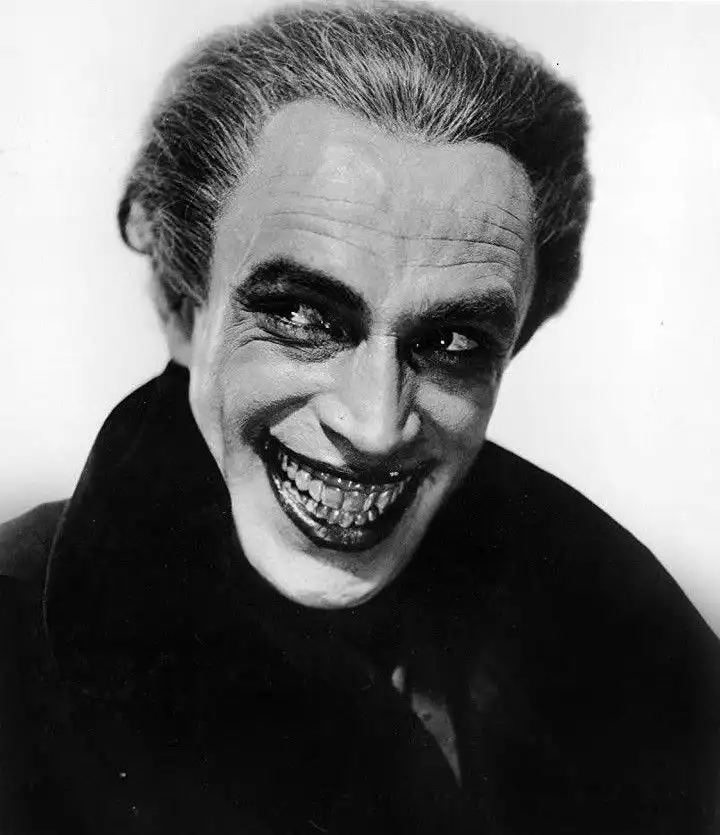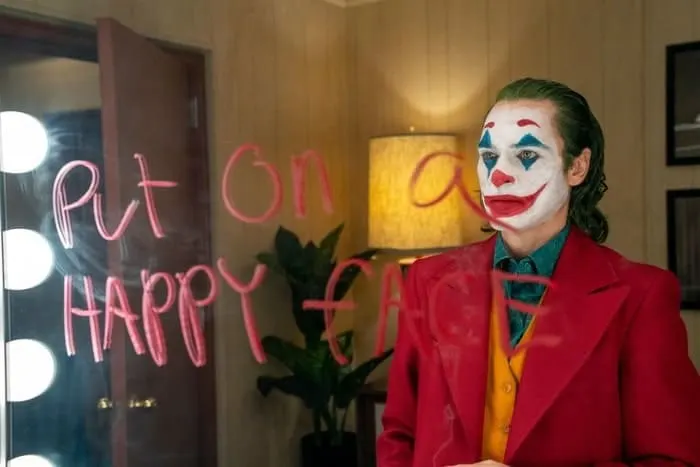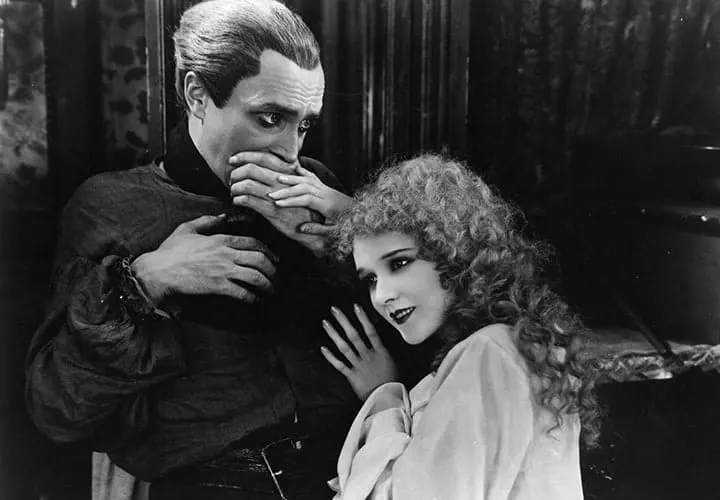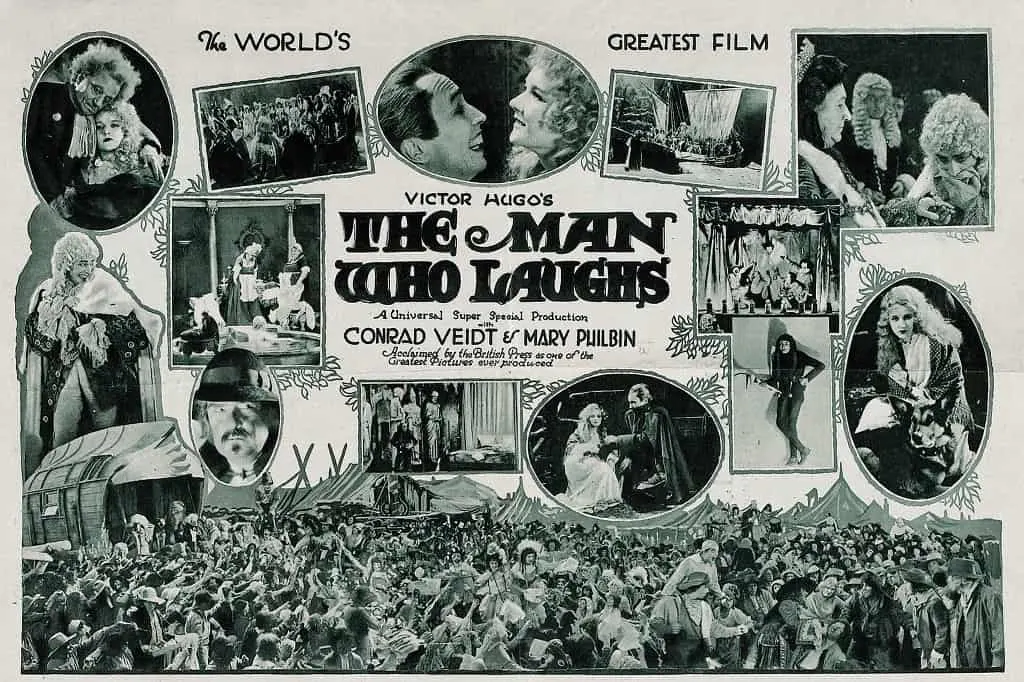Paul Leni’s silent film, The Man Who Laughs, was credited by Bob Kane, the creator of Batman, as the inspiration behind Dark Knight’s arch-nemesis, the Joker.
The Man Who Laughs tells a macabre tale of a man named Gwynplaine, adapted from Victor Hugo’s novel of the same name.
The story centers around Gwynplaine who, as a child, had a permanent smile carved into his face as punishment for having a rebelious nobleman for a father.
You have to admit that’s a hardcore origin story. And we’re talking about a movie that’s older than your grandma.
Although it’s considered as one of the German expressionist masterpieces, Paul Leni’s film today is best known „The Movie That Inspired Batman’s Joker“.
Even if you’re unfamiliar with the film, it’s obvious at a single glance that the Joker owes his appearance to the character that Conrad Veidt brought to life back in 1928.

Universal Pictures
The Joker was created by the artistic team of Bob Kane, Bill Finger and Jerry Robinson for the Batman No. 1 comic book in April 1940.
While his origins are a source of debate, it is agreed that the Clown Prince of Crime was inspired by the look and performance by the German actor.
In a 1994 interview, Batman creator, Bob Kane, acknowledged The Man Who Laughs as a direct visual inspiration for the Joker:
Bill Finger and I created the Joker. Bill was the writer. Jerry Robinson came to me with a playing card of the Joker. That’s the way I sum it up. But he looks like Conrad Veidt – you know, the actor in The Man Who Laughs… So Bill Finger had a book with a photograph of Conrad Veidt and showed it to me and said, “Here’s the Joker.”
And yet, somehow, Todd Phillips – the director of the 2019 standalone Joker movie – was completely unaware of this when he was developing his take on the iconic villain.
“I think you have to start with The Man Who Laughs, which is a silent film that really was a huge inspiration for us and oddly was a huge inspiration for the original creators of Joker, which we didn’t even know, believe it or not, as silly as that sounds,” Phillips said.
The latest onscreen Joker, Joaquin Phoenix, lacks the permanent grin of Gwynplaine, but has his clown makeup is almost an exact copy of The Man Who Laughs clowns.
While preparing for his role, Phoenix’s also studied the movement of the silent era actors like Buster Keaton, and – you guessed it – Conrad Veidt.

Warner Bros.
Though often classified as a horror film, The Man Who Laughs isn’t truly meant to be one.
Although it’s undeniably steeped in German expressionist gloom – the same one that produced Nosferatu or The Cabinet of Dr. Caligari – Leni’s film has more of romantic melodrama and swashbuckler elements, than it does horror.
Except, that is, for its ominous atmosphere and the nightmare-inducing still shots – the product of photography like few other films of the era have achieved.
The film begins with the capture of Lord Clancharlie (Veidt in a dual role), a political rival of the tyranical king James II.
The king’s conniving jester sentences Clancharlie to death in an iron maiden. To make matters worse, he sells his young son, Gwynplaine, to a band of malevolent wanderers or comprachicos (coined by Victor Hugo, meaning “child-buyers”).
The comprachicos carve a permanent grin into the boy’s face so that he may “laugh forever at his fool of a father.”
When the comprachicos are exiled, Gwynplaine is deserted in the snow where he rescovers a blind baby girl – later named Dea – from her mother’s corpse. Together, they are taken in by the caravan owner Ursus (Cesare Gravina).
If this was a Hollywood movie by today’s standars, Gwynplaine would probably grow up into a revenge-hungry monster.
But this is not that kind of a story, and Gwynplaine is no way sinister like his comic book doppelgänger, the Joker.
He grows into adulthood with the aid of a fatherly Ursus who has built a carnival attraction around Gwynplaine as “The Laughing Man.”
Though he suffers the mockery and rejection of almost everyone who sees him, the saddest clown ever finds solace in Dea’s (Mary Philbin) love.

Universal Pictures
But that’s not the end of Gwynplaine’s story. In a twist of fate, he is restored to nobility, and caught in the political schemes of the other nobility.
“The Laughing Man” finds himself being used as a puppet Peer in the House of Lords, until he rejects his rightful title and the Queen’s orders to marry a duchess, vixen Josiana (Olga Baclanova).
He finds the courage to stand against cruelty, and exclaims “A king made me a clown! A queen made me a Peer! But first, God made me a man!”
Now his own man, and not a laughable and tragic figure, Gwynplaine evades his captors and – at last – reunites with his love, blind beauty Dea, and surrogate family as they flee to England.
Universal spent over 1 million dollars on the film, which was a tremendous sum back in 1928. And the big budget and director Paul Leni’s genius are visible in almost every frame.
The Man Who Laughs is indeed a visual stunner, beautiful and haunting, almost eerily hypnotic.
The film has also provided audiences with one of the most profound performances from a silent film actor.
Despite performing with a set of dentures that had metal hooks to pull back the corners of his mouth, Conrad Veidt flawlessly conveyed Gwynplaine’s torment with his eyes, and managed to reveal the man behind the “laugh.”
However, upon its release, the critical assessment of The Man Who Laughs was mediocre. Some critics disliked the morbidity of the subject matter, while some complained about Germanic-looking sets (the movie was set in 17th century England).
But today – with the critics praising Veidt’s performance, as well as the film’s cinematography – the film can be appreciated as one of the classic Gothic dramas of the 1920s, and is sitting comfortably on 100% rating on Rotten Tomatoes.
So, do yourself a favor and watch it.
The Man Who Laughs was released on Blu-ray on June 4, 2019 – sourced from a new 4K restoration – and features a new score performed by the Berklee College of Music.
Like this story of The Man Who Laughs, the film that inspired the Joker? Share or pin it later! You can also stay in the loop and follow us on Facebook and Pinterest.

